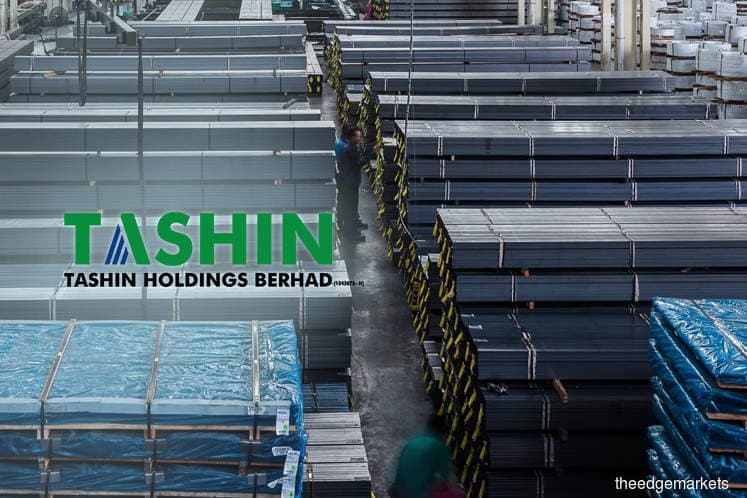
KUALA LUMPUR (Aug 2): Shares of Tashin Holdings Bhd continued to see a downward trend today, falling as much as six sen or 12.37% to 42.5 sen at the noon break.
At the time of writing, 8 million shares were traded, valuing the company at RM155.3 million.
The steel processor and manufacturer, which was newly listed on the ACE Market of Bursa Malaysia yesterday, saw its shares closed 9.5 sen or 16.38% lower at 48.5 sen on its first day of trading after opening at its initial public offering (IPO) price of 58 sen.
At 42.5 sen, Tashin's share price fell 26.72% from its IPO price.
Research houses seem to have a view that Tashin has a lower fair value, according to IPO notes released today.
"We assign a target price-to-earnings (PE) multiple of 7 times to Tashin and arrive at a fair value of 22 sen. This is after considering the group has proven track record in steel manufacturing industry and the potential growth from capacity expansion," said TA Securities in a note today.
On earnings forecasts, TA Securities is estimating the group to record earnings growths of 12.1%, 18.3% and 9.2% to RM9.2 million, RM10.8 million and RM11.8 million for FY19, FY20 and FY21 respectively, supported by top-line growth with higher production volumes.
The research house noted that the domestic market will remain as the main revenue generator for the group.
PublicInvest Research, on the other hand, has derived that Tashin has a fair value of 44 sen based on a 10 times PE multiple to its FY20 earnings per share (EPS) of 4.4 sen.
"We think the current listing price is relatively overvalued," said the research house in an IPO note today.
PublicInvest noted that Tashin's growth will be focused on expansion of steel manufacturing activities, increase of production volume, and increase of efficiency of steel processing and steel manufacturing activities.
Tashin's competitive strengths include a wide range of steel products that support various industries, long-term relationships with customers and suppliers, an emphasis on product quality, and an experienced management team, said PublicInvest.
Key drivers may include continuous growth of manufacturing sector, steady demand from automotive industry, and revival of infrastructure projects and demand for residential projects in construction sector.
Downside risks, among others, include competition within the steel processing and steel manufacturing industry, fluctuations in price of raw materials, fluctuations in foreign exchange, changes in import duty regulations in the steel industry, dependency on major supplier, reliance on foreign workers in operations, and may be subject to impairment loss or bad debts, the research house added.